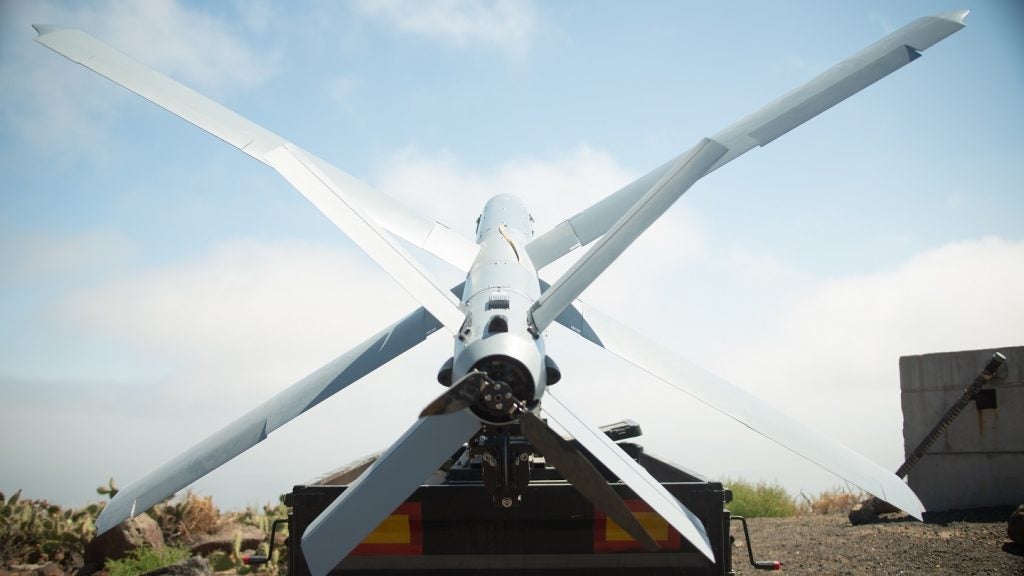The US Marine Corps (USMC) has recently announced its intention to develop a family of loitering, swarming munitions that can be launched from attack helicopters, such as the AH-1 Cobra.
The announcement came in the annual update to the Marine Corps’ force restructuring plan, Force Design 2030, as well as in a briefing by Brigadier General Stephen Lightfoot during a media event.
The report states that “with the support of the Office of the Under Secretary of Defence for Research and Engineering, we will begin the Long-Range Attack Munition project to rapidly develop and field a low-cost, air launched family of loitering, swarming munitions.”
The report also adds that another project includes “developing a common launcher for the family of ground-launched loitering munitions.”
These next-generation “suicide drones” mark a pivot away from heavy-armoured tanks and large infantry battalions towards more nimble and lighter drone squadrons, adapted for a war with China.
Lightfoot told reporters that the range of Long-Range Attack Munitions (LRAM) will far exceed the 8km radius of the AGM-114 Hellfire missile, which are known for their anti-armour and precision strikes – making it more suited to skirmishes in the littorals of the Indo-Pacific region.
“As demonstrated in the 2020 Nagorno-Karabakh conflict and presently in the Russia-Ukraine conflict, UAS platforms and loitering munitions routinely defeat armour and fighting positions with top-down attacks,” says the Force Design 2030 report. “Simply put, platforms that cost thousands of dollars can defeat platforms that cost millions of dollars.”
However, the report calls for an acceleration of the procurement and training of organic precision fires (OPF), both infantry OPF (OPF-I) and mounted OPF (OPF-M or loitering munitions), deeming current efforts too slow.
In a recent report on loitering munitions (LMs), the business intelligence firm, GlobalData, says that LMs have several advantages over armed drones, such as their self-destructive capabilities. Moreover, while other types of munitions have a specific target and follow a clear trajectory to hit it, thereby leaving them more vulnerable to interception, LMs travel to the general area of their target and wait for an opportunity to strike.
The USMC have already integrated LM systems into their armoured marine vehicles – both Amphibious Combat Vehicles (ACV) and Advanced Reconnaissance Vehicles (ARV) – and other marine platforms. In 2021, an Israeli company specialising in loitering systems, UVision, was awarded a multi-year contract to supply the Hero-120 OPF-M systems to the USMC, together with its multi-canister launcher. According to UVision, the Hero-120 can loiter for up to an hour over ranges of up to 60km before delivering its 4.5kg warhead.
Loitering munitions are a rapidly expanding segment
GlobalData expects to see “unprecedented growth” in the LM market in the coming decade, with use cases having increased significantly over the past few years.
The GlobalData report states: “The loitering munitions market will benefit from increased modularity, increased use of artificial intelligence (AI), use of swarm technology, and increased sensor capabilities in the next ten years.
“The market will also benefit greatly from the increased proliferation of unmanned systems, as the mass use of such systems drives down the cost of mutual components, with the low cost of the systems being paramount to their application.”
Other macroeconomic drivers include a proliferation of UAVs in China, which has produced a number of LMs domestically, such as the CH-901, CH-817, and the WS-43. Indeed, the People’s Liberation Army (PLA) has been experimenting with LMs as far back as 1994, when it acquired Israeli-made Harpy anti-radiation drones.











